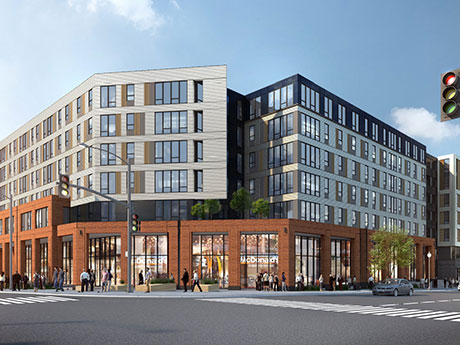By Jeff Budish, Northmarq
Three years in, and the COVID-19 pandemic has immensely altered how multifamily and commercial properties are utilized, located and valued. Now with interest rate changes, all product types have seen a hit from the change in the cost of capital. While challenges are on the horizon, Midwest markets, including Minneapolis-St. Paul, should see less shake up than elsewhere.
Despite rising interest rates, recession worries and nagging inflation, the Twin Cities multifamily sector is resilient. Vacancies remain low, demand is outpacing supply and rents are solid. Year over year, apartment rents in the Twin Cities area are up 5 percent.

While COVID changed the dynamics of all product types, it explicitly impacted multifamily. The increase in remote work meant employees were not tethered to a physical office. Many people moved away from their workplaces in densely populated areas to the suburbs. However, Minneapolis and St. Paul proper generally saw net outbound demographic shifts. Valuations over the past two years therefore didn’t include additional inflated pricing based on speculation of continual inbound movement.
There is also soaring demand for apartments due to an increase in the number of Americans living on their own, roommate-free. In an AvalonBay public earnings call, an official said the number of residents per unit nationally decreased roughly 12 percent, theoretically resulting in the need for 12 percent more dwelling units over the matter of a year, which is unprecedented.
These two trends pushed the majority of multifamily development and transaction activity to the Twin Cities suburbs. Rents in the suburbs were up year over year, although not at the staggering rate of southern markets. The Twin Cities metro area is also not oversupplied like some higher rent growth markets.
Residents are beginning to move back to the city albeit slower than many projected due to Minneapolis-St. Paul’s civil unrest, which has created safety concerns downtown. However, as more companies bring employees back to the office, many working remotely may seek housing options near their jobs. Also, there will eventually be a return to the core as downtown bustles again with restaurant/entertainment venues.
Meanwhile, eviction filings in the Twin Cities are continuing as multifamily owners try to recoup unpaid rent incurred during the pandemic. Eviction filings in Minnesota surged in June-July 2022 and continue into 2023 due to a backlog from the courts after the eviction moratorium expired, and the state allowed actions for nonpayment of rent to resume.
Investors moved capital
Just as people moved during the pandemic, many investors moved their capital, following the migration of companies and employees that headed to the South and Southwestern regions of the United States. Investors were chasing population growth and surging multifamily rents. Hot markets included Arizona, Florida and Texas. However, investors bid up Sunbelt properties, which led to some overpricing.
Conversely, the Twin Cities did not experience that overpricing. Historically, this is a stable market during uncertain times; typically, it does not get overbuilt or underbuilt.
In the next five years, if uncertainty or volatility occurs, the Minneapolis-St. Paul market will remain a solid market in which to invest. More stable money will return, perhaps lower-
leverage money. Property fundamentals are less volatile here than in many areas across the country. This consistency will continue to attract investors. Robust market fundamentals include a strong employer base, low cost of living and unemployment of less than 2 percent.
More active investment
Over the last decade, real estate has been increasingly attractive to passive investors. However, it will return to be a more active investment as investors are required to become more hands-on. Groups that will be most successful in the next 18 months will have a good management relationship or in-house management/operations to increase operating efficiency and productivity. In multifamily, the operations side will become more important because of labor turnover and inflation pushing up expenses.
Additionally, city politics and government policies will be important to monitor. Multifamily developers that can navigate affordable developments and new Minneapolis rent control policies will prove successful. Market-rate multifamily development no longer makes financial sense because of inflation and rising interest rates. Most development will be affordable projects utilizing public subsidies.
Snapshot of other sectors in the Twin Cities:
Retail — Because there is less supply of new product being built, there could be opportunity for existing retail. Prime retail is still in demand. Consumer budgets tightening will also play a large role here.
Office — Newer, Class A space will likely perform well — as employers continue bringing workers back to the office — while run-of-the-mill office space will suffer. Expiring debt will also play a large role here as even temporary vacancy will make refinancing difficult.
Industrial — Industrial should be the most stable going forward, as there will be consistent demand for warehousing and distribution center space. There are more geographic restraints in industrial than any other product type, so infill locations won’t see new competition.
Jeff Budish is a managing director with Northmarq. This article originally appeared in the March 2023 issue of Heartland Real Estate Business magazine.


